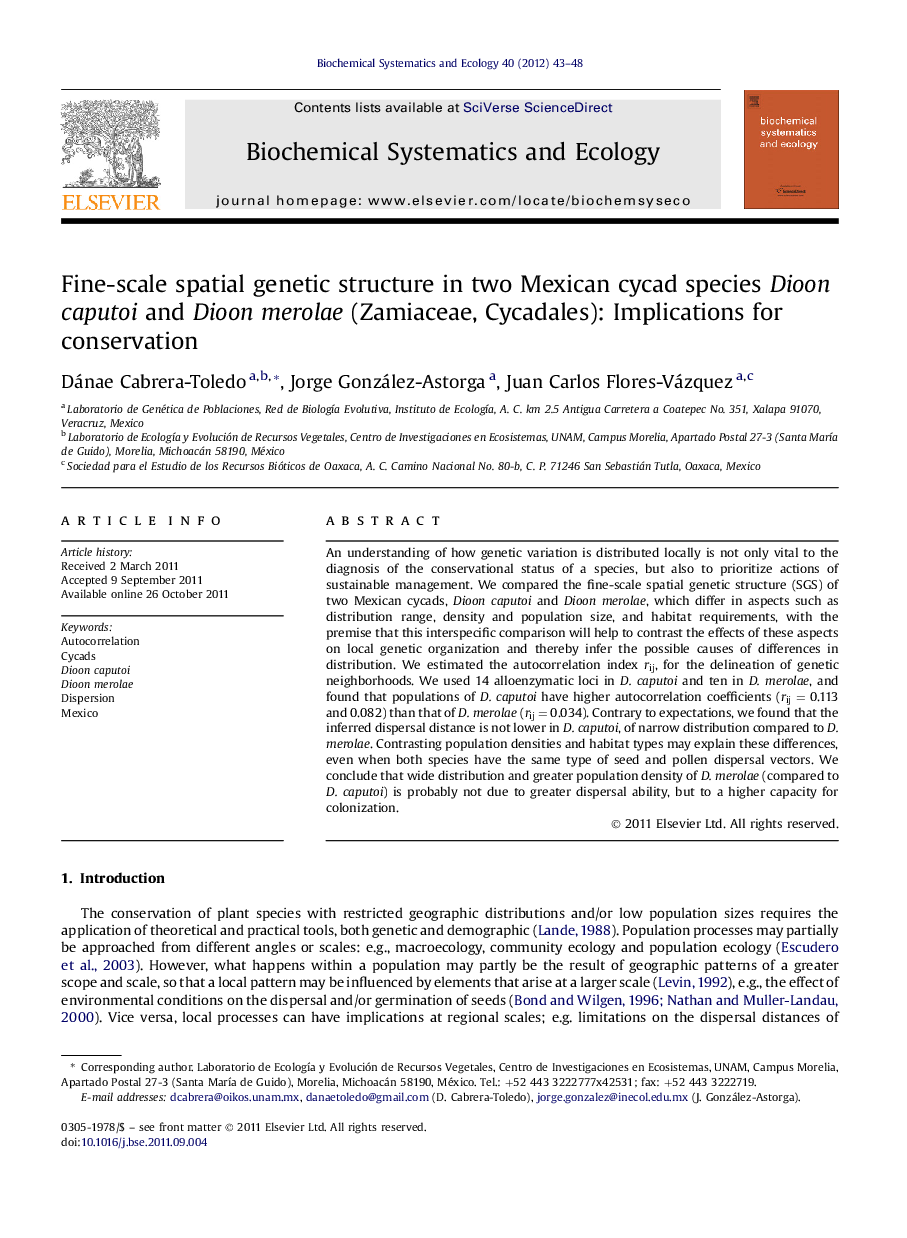| Article ID | Journal | Published Year | Pages | File Type |
|---|---|---|---|---|
| 1351842 | Biochemical Systematics and Ecology | 2012 | 6 Pages |
An understanding of how genetic variation is distributed locally is not only vital to the diagnosis of the conservational status of a species, but also to prioritize actions of sustainable management. We compared the fine-scale spatial genetic structure (SGS) of two Mexican cycads, Dioon caputoi and Dioon merolae, which differ in aspects such as distribution range, density and population size, and habitat requirements, with the premise that this interspecific comparison will help to contrast the effects of these aspects on local genetic organization and thereby infer the possible causes of differences in distribution. We estimated the autocorrelation index rij, for the delineation of genetic neighborhoods. We used 14 alloenzymatic loci in D. caputoi and ten in D. merolae, and found that populations of D. caputoi have higher autocorrelation coefficients (rij = 0.113 and 0.082) than that of D. merolae (rij = 0.034). Contrary to expectations, we found that the inferred dispersal distance is not lower in D. caputoi, of narrow distribution compared to D. merolae. Contrasting population densities and habitat types may explain these differences, even when both species have the same type of seed and pollen dispersal vectors. We conclude that wide distribution and greater population density of D. merolae (compared to D. caputoi) is probably not due to greater dispersal ability, but to a higher capacity for colonization.
► Local biotic and abiotic dinamics changed a narrow genetic neighborhood expectation. ► This can be a possible explanation of rarity differences in these species. ► This is applicable information to consider in conservation and management criteria.
